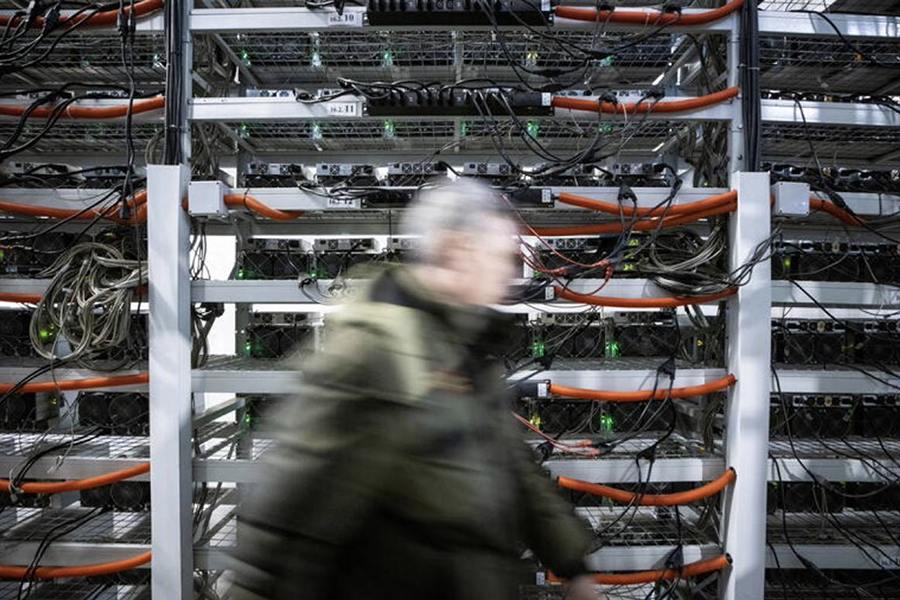Environmentalists warn carbon emissions from power-intensive bitcoin mining could harm efforts to limit global warming.
In mid-April, nearly 150 local environmentalists marched to the gates of Greenidge Generation, a bitcoin mining facility in upstate New York, in a last-ditch effort to block its expansion.
Their objection: that the creation of the cryptocurrency, an energy-intensive process in which computers compete to solve mathematical puzzles, may harm efforts to limit global warming.
Three days later, the planning board in the small town of Torrey voted 4-1 to allow Greenidge Generation to more than double the number of machines it has mining bitcoin.
“Everything we want to do to fight climate change could be erased,” Yvonne Taylor, one of the march’s leaders, told the Thomson Reuters Foundation.
The showdown in New York – where a private equity firm turned a moth-balled coal power plant into one fired by natural gas that provides electricity to mine bitcoin onsite – is part of an increasingly fraught debate over the social benefits and environmental costs of the world’s most popular cryptocurrency.
Bitcoin consumes almost the same amount of electricity annually as Egypt did in 2019, according to an index compiled by the University of Cambridge.
On Wednesday, Elon Musk, the chief executive of Tesla Inc, said his company would no longer accept bitcoin for car purchases, citing environmental concerns, in a swift reversal of its position on the currency after criticism by some investors.
“As the price rises, bitcoin could consume as much energy as all the data centers in the world combined,” said Alex de Vries, founder of research platform Digiconomist, which publishes estimates of bitcoin’s climate impact.
“At least other data centers are providing us with cloud computing used by billions every day. Hardly anybody is using bitcoin,” he added.
Greenidge spokesman Michael McKeon said in an emailed statement the firm was doing all it could to address environmental concerns.
“Natural gas is a bridge to the future and it’s an important part of the energy mix for New York State,” he said. “We are committed to further investing in ways to enhance our green profile and are looking at various options right now.”




































